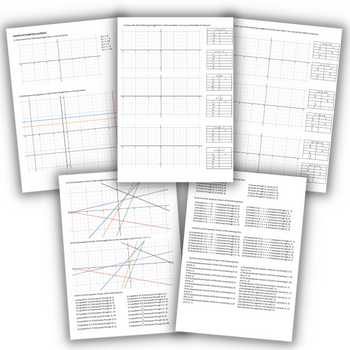Use this comprehensive equation of a line worksheet as a revision resource. Alternatively, select the parts appropriate to what you are teaching.
While you’ll typically introduce the material in this equation of a line worksheet in KS3, there’s also some content that is generally exclusive to KS4.
This worksheet starts with drawing and identifying horizontal and vertical lines. It then moves on to drawing lines of the form and using a table of values.
In Q5-6 pupils need to identify the equations of lines in these forms. They’ll need to present the information in text rather than visually. This includes two given points where the right-hand point is given first, eg (2, 2) and (-4, -2).
Q9 gives the information about a parallel line (both in the form y=mx+c and ay+bx=c).
Q10 looks at perpendicular lines. Q11 covers perpendicular bisectors and perpendiculars that cut a line segment in a given ratio.
Free linear equation worksheet
The practice questions on these teaching resources have been designed to allow pupils to try all significant aspects of the content, but also to notice something about the structure behind each content area.
Students will need to engage in reasoning to explain why they’re seeing the results they are.
Worksheets requiring arithmetic have generally been limited to integer calculation so they can be used with pupils who may not yet be fluent in decimal/fractional arithmetic.
Where pupils have these pre-requisite skills, we recommend adapting the questions (where appropriate) to include this content.
We’ve included an answers sheet in the download for your convenience.
Peter Mattock is an assistant headteacher and secondary mastery lead for the East Midlands South Maths Hub. He’s the author of Visible Maths and Conceptual Maths (Crown House Publishing). Follow Peter on Twitter at @MrMattock.
Download a KS3 introduction lesson to straight line graphs, linear functions and y=mx+c.














